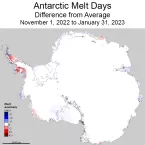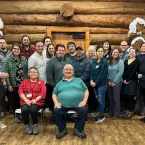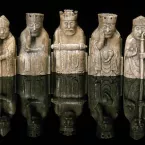Our Research
As climate changes, how do Earth's frozen areas affect our planet and impact society?
In this section
Related News & Stories
Filter by:
Analysis - Sea Ice Today
Antarctic sea ice extent appears to have broken the record low set last year. With a couple more weeks likely left in the melt season, the extent is expected to drop further before reaching its annual minimum.

Analysis - Snow Today
A series of atmospheric rivers significantly increased snow-covered area and snow water equivalent in the California Sierra Nevada, and to a lesser extent the delivery of snow inland to Nevada, Utah, and Colorado. Snow-covered area for the western United States was 125 percent of average for January with above average snow cover in most regions.

Analysis - Ice Sheets Today
Surface melting over Antarctica was near-average through January, but above average surface melting occurred on both the northeastern and southwestern areas of the Antarctic Peninsula.
Analysis - Sea Ice Today
Arctic sea ice extent rose at a slower than average rate through January, and continued to be below the lower interdecile range. By the end of the month, sea ice reached the second lowest extent in the satellite record.

ELOKA Event
On December 6 and 7, 2022, ELOKA met with partners at the Alaska Native Heritage Center in Anchorage, Alaska, to make plans for partner involvement in ELOKA’s work through the end of the current National Science Foundation (NSF) award in early 2026.

Spotlight
The Global Lake and River Ice Phenology Database (G01377), archived by NOAA@NSIDC, has some of the oldest observations on record at NSIDC. The database includes observations dating back to the ninth century.